Drones have become very popular, not only among companies but also among people. From photography and videography, to simply exploring a new place, drones can be used for many things.
Different countries have different laws and rules, but if you’re residing in the Philippines or planning to visit, you might own a drone system. If you do, you should know the rules, regulations, and drone laws of the Philippines to avoid any issues.
This article explains the drone laws in the Philippines and describes what you can and can’t do while using a drone in the country.
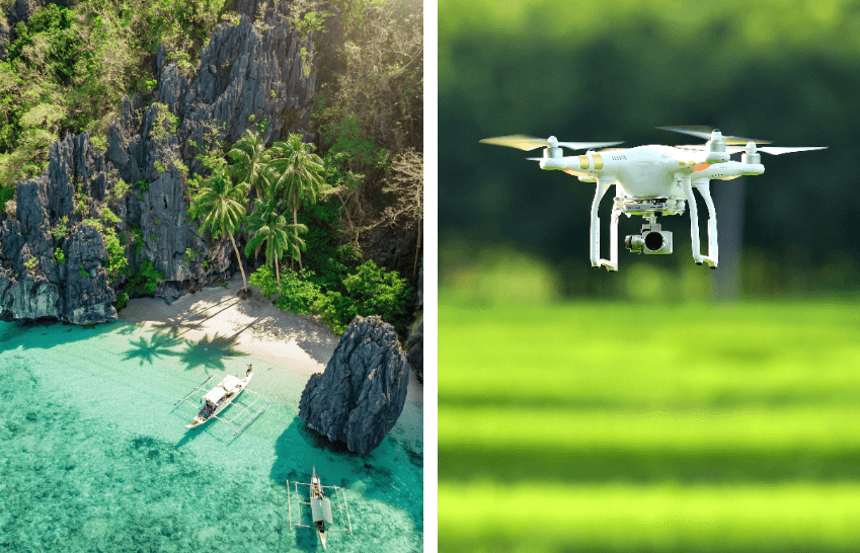
However, your drone must only be used for recreational activities, and it must be checked and described as a light object before being allowed to enter. Drones that are heavier than the standard will be seen as a threat and will not be granted access to enter the country.
If you’re wondering what type of drones are acceptable by the government to enter the country, then you should check out our list of the best nano drones. They’re small and light drone machines that are budget-friendly and can also serve different purposes.
If you’re looking at bringing a drone into the country, the best thing for you to do is to read the drone regulations of the Philippines.
It is also essential that you make the proper findings on the airline that you’re flying. This can be a long, annoying process, but it is the safest option for you.
If you’ve successfully gotten your drone into the country, you may then be wondering whether it is possible to fly your drone machine in this country.
The CAAP drone rules are the regulations concerning drones and other flying objects in the Philippines. If you are caught not following these rules, your drone will be seized, and you can be charged.
So, yes, you can fly a drone in the Philippines. All you have to do is make sure it’s accepted. You’re not going against the country’s laws by going for a walk around the beautiful countryside with a drone. If you wonder what drone to buy, you can check out our list of the best follow-me drones, as they’re reliable and convenient.
As previously stated, the Civil Aviation Authority of the Philippines Trusted Source Civil Aviation Authority of the Philippines 12 January 2023 Cotabato City – The Civil Aviation Authority of the Philippines (CAAP) has transferred the management of six airports in Mindanao to the Bangsamoro Autonomous Region in Muslim Mindanao (BARMM) on 11 January 2023. caap.gov.ph (CAAP) is in charge of enforcing the laws on drones and using other flying aircraft around the country. The CAAP has the full power and authority to make new policies and persecute those who break these laws.
To avoid inconveniencing yourself and getting in trouble, the best thing is to understand these policies and abide by them. Most of these rules are based on the weight of the drone. Whether it is used for recreational activities or commercial purposes also matters.
It is important to note that there are places where the drone, as well as the pilot, needs to be registered by the CAAP before entering.
These laws are strict, and if you don’t follow them, the CAAP has every right and power to punish those who violate them. Some punishments include heavy fines, and depending on the severity of the crime, you can be given jail time.
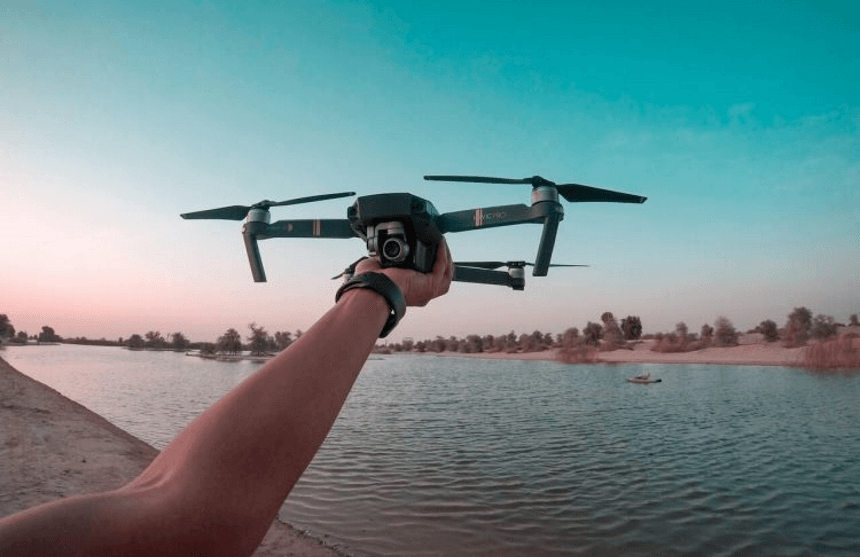
There are different laws that guide recreational drone piloting in the Philippines. Luckily, you don’t require a license to fly a drone for a hobby, only if it weighs less than 7kg. You just need to follow certain rules. They include:
One of the best recreational drones that you can get is the PowerEgg X, it is one of the best lightweight drone systems, so you can use it in the Philippines. It is also capable of flying in the air and also landing on water, with functional AI capabilities that can turn into a personal camera.
There is also the other kind of drone use available in the Philippines, commercial drone piloting. These drones are the direct opposite of the recreational drone system as they’re more powerful and are used for businesses.
Unlike recreational drone piloting, you need a permit before you can use drones for commercial purposes. And you must apply for a Certificate of Authorization at least 90 days before making use of the drone system.
The Certificate of Authorization will be issued to individuals as long as:
Although, applications may be denied if the applicant previously held a Certificate of Authorization that was revoked or had a hand in the circumstances that led to the Certificate of Authorization being seized.
The use of commercial drones in agriculture
Commercial drones are widely used in agriculture, and they help out a lot.
Although it was initially slow to be integrated into the agricultural sector, with time, it slowly became well-used, and drone technology has become increasingly popular in this sector.
Drones can be used for different things in the agricultural sector Trusted Source Philippines looks to drones to boost farming Technology is fast advancing and has produced machinery that could change what was once a laborious and tedious farming process into an efficient and automated one. opengovasia.com . For example, drones can be used to spray extensive farmland and also examine a wide range of land so farmers can identify where needs to be worked on.
The use of commercial drones in construction
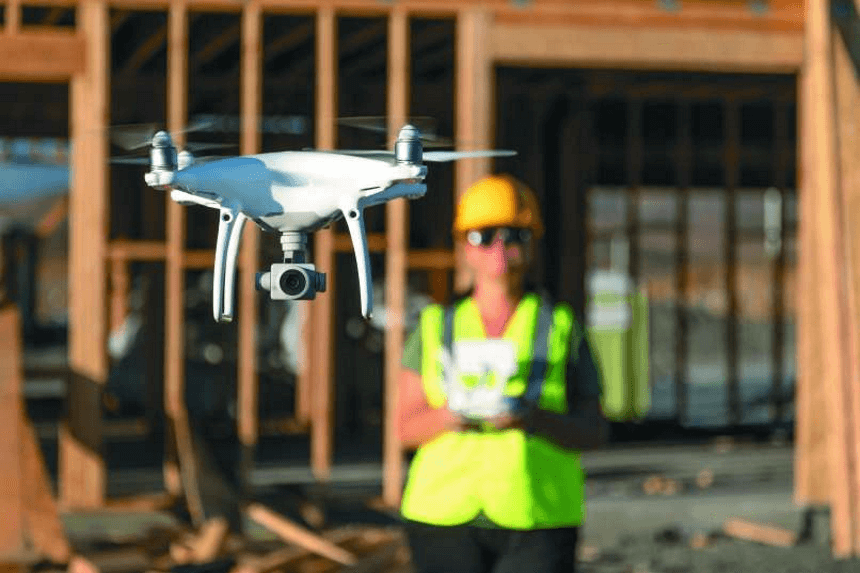
Drones also help in providing timely updates on how things are going with the projects, which makes the process more systematic and organized.
If you’re looking for a drone that can be used to work on-site, then the DJI Mini 3 Pro Drone is one that you should look at if you’re looking for a high-quality drone that has a wide range.
Commercial drones in public safety
In public safety and environmental protection services, drones are beneficial as they perform various tasks. One of the most vital things they help with is that they provide fast situational awareness with the use of mapping technology and these help responders.
Also, they help in identifying different hot spots, checking for damage that is done to the property, searching for remaining survivors, and destruction on infrastructure. Drones are handy to fire prevention companies as they constantly navigate around looking for fires, not only residential fires but also preventing high forest fires.
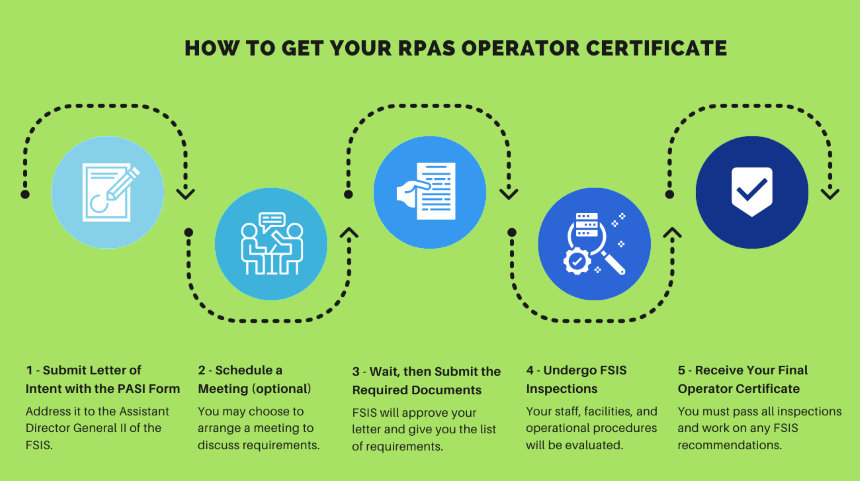
Here are the certifications that you must register with before obtaining the proper licenses:
This is a certificate you must obtain Trusted Source Remotely Piloted Aircraft Controller Certificate Licensing And Certification Department A Remotely Piloted Aircraft Controller Certificate is required for individuals: (a) who intend to operate their drones commercially or; (b) whose drones weigh 7kg and above. caap.gov.ph before you pilot a drone in the Philippines. It’s a stressful process, but it’s one that everyone must go through. To get it, you must pass a training program and take an evaluation examination to see whether you can handle a drone.
Once approved, you are given a license to fly your drone freely, valid for 5 years. Once it expires, you’re meant to reapply and be issued another before you can use it again.
The following document that is needed is the UAV Registration. This is the documentation necessary to show that the drone is owned by you and not stolen property. The UAV registration gives your drone an identification number used to track and verify it if the need arises.
The last certificate needed before you can freely access a drone in the Philippines is the UAV operator certificate, which is the documentation with extensive details of how the drone is operated.
This particular certificate requires a letter of intent and the drone’s specifications. This is important as it ensures that your work is appropriately organized.
It usually takes a while to get, but once it has been received, it is valid for 3 years, and after, it must be applied for again.
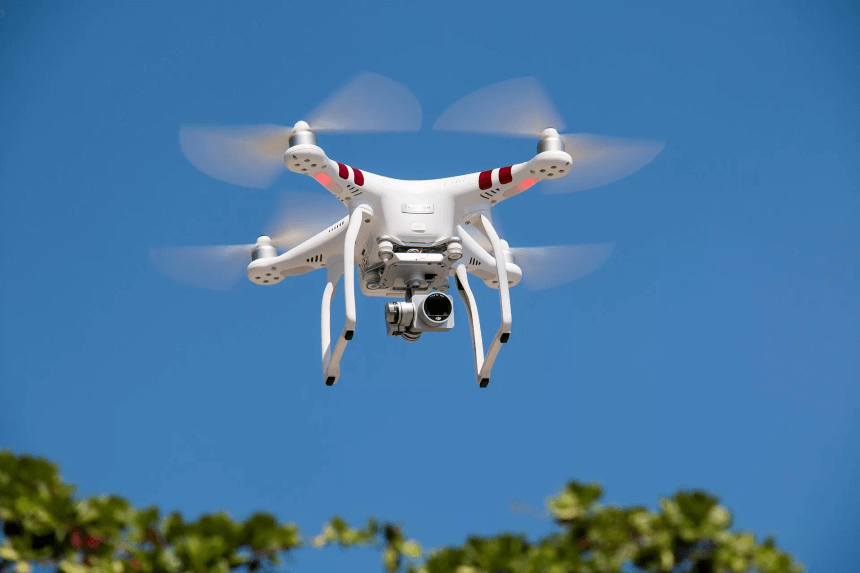
Although the law isn’t as strict as in other countries, it is still advised to abide by them as the authorities can punish you and confiscate your drone.
There are various things that you are allowed to do and also things that you cannot do when you are flying drones in the Philippines. We shall be discussing each of them below.
1. If your drone weighs 7kg or more, you have to receive the proper documentation and certification from the CAAP to possess it.
2. Your drones must only be used during the day. If you’re to fly at night, the drone system must have good lights illuminating them and making them clear.
3. Drones must not be flown in unstable weather conditions. If it’s not sunny and calm, your drone should never be in the air.
4. Anyone next to you who can communicate directly with you should be able to see your drone while it’s in the air so that any incident can be avoided.
5. Drones should never be flown over populated public areas — for example, malls, schools, churches, etc.
6. Your drones must never be flown above crowds, they can be seen as a threat, and there must be a 30m distance between the drones and the elderly, vulnerable groups, kids, pregnant women, and the impaired.
7. Your drone should never reach 400m above ground level. Going higher may be classified as unidentified and taken down.
8. Personal drones must never interfere in emergencies such as fires, accidents, etc.
9. Drone systems should be kept as far away from the airports as possible. At least a 10km distance should be kept between the drone system and airports. They should also not come in communication with manned aircraft
Public security and maintenance are essential, so it’s advised that you avoid coming in contact with any community property, and the most convenient way to do so is by using drones that are designed to maintain distance from other objects. If you’re interested in this, check out our compilation of the best obstacle-avoidance drones.
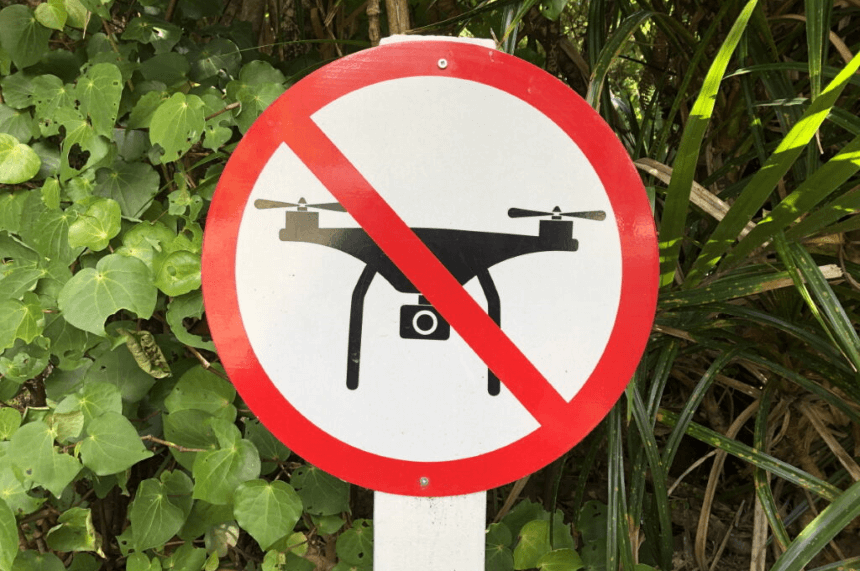
Apart from flying over, you cannot take pictures of people’s land and properties using your drones. In the Philippines, some rules state that you can’t take photographs of others’ private property without permission as it violates safety and Privacy rights.
Although drones can be used in the Philippines, there are different places where it is illegal to fly a drone around, and if your drone is caught flying in these no-drone zones, it can be brought down and even damaged.
There are multiple places where you cannot fly your drone over, and if you need help knowing where it is safe and where it is not, there are numerous air space maps that show you where it’s okay to use your drones. Some of the no-drone zones in the Philippines include the following:
There is restricted airspace, and the Philippines law doesn’t allow drone flight over these areas. Wary of these areas as it’ll be seen as illegal to fly over them.
There are particular areas where they don’t allow drones to land or take off. Some might be government-owned agencies, and to identify them, you’ll notice a “No drone” sign that states the restrictions on drones and other flying aircraft.
It is essential to note that although you cannot land or take off in these areas, you can fly over them and navigate around. As long as it is an identified area, you can safely pass over them.
Some areas have temporary flight restrictions for a specific amount of time, and there are placed here for different reasons.
Some of these special conditions include sporting events, moments where the president and other high-ranking leaders are passing, and areas where federal agencies have classified them as unsafe.
If you’re an individual flying a drone, and you see a no-drone indication, you should immediately turn away and not go close to it. It is better to be safe than sorry.
Also, note that not everyone can make use of a no-drone sign, and before you can, you have to apply and state the reasons why you need it.
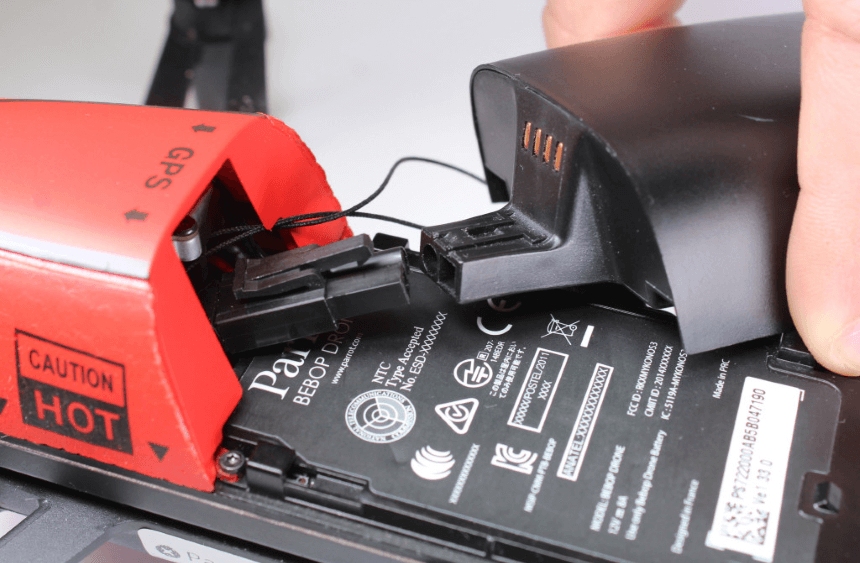
Be early
It is better to come early and clear questions surrounding your drones. This is to avoid problems with the security and authorities in the airport.
Always place your drone in a hand luggage
When you’re traveling with a drone, you should always make sure you have it kept in your hand luggage. This is to avoid theft and also damage.
Remove the batteries
This is a vital thing to do. Before you travel, you should always make sure to remove the batteries from your drones. There is a risk of a fire with the batteries in it, and airlines won’t allow you to travel until the batteries are discharged.
Following these few tips will help you safely travel with a drone without any issues.
If you’re looking at going to the Philippines with a drone, apart from learning their language and culture, you should also look out to discover their drone laws. This is essential so that you can use your drone without any fear of being charged with violating the rules of the country.
The drone law in the Philippines aren’t are strict as other countries from the eastern side of Asia, but that doesn’t mean you shouldn’t follow them. Be wary of changes in the law, and ensure you always follow the ones already put in place.